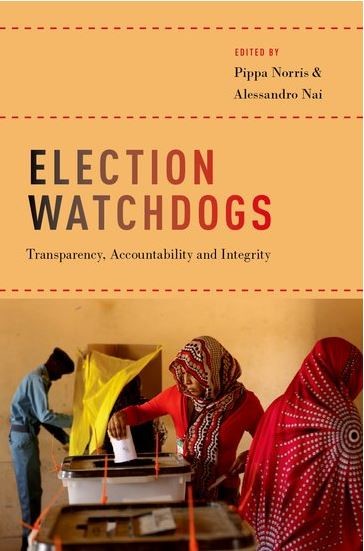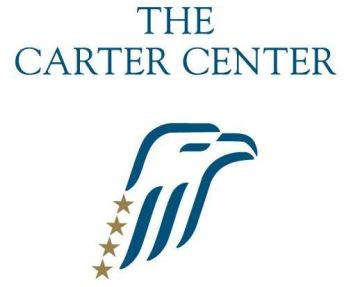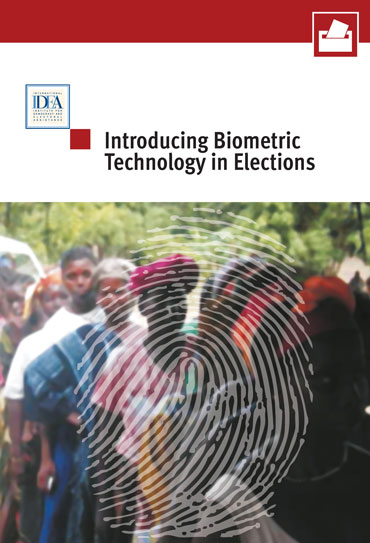ACE Updates August 2017

|

Dear readers, International Youth Day will be celebrated on August 12, and the International Day of Democracy is September 15. In the spirit of these two occasions, this edition of the ACE Newsletter features an article by 2017 IFES Manatt Fellow Kirstie Dobbs. The article focuses on the potential impact of politically-disengaged youth and low youth voter turnout on democratic sustainability. The August 2017 edition of the ACE Newsletter further highlights:
The ACE Electoral Knowledge Network promotes credible and transparent electoral processes with an emphasis on sustainability, professionalism, and trust in the electoral process. ACE offers a wide range of services related to electoral knowledge, assistance, and capacity development. Thank you for reading August’s newsletter and for your involvement with ACE. We look forward to your contributions to the Network! Best regards, The ACE Electoral Knowledge Network This newsletter is also available in PDF format.
Electoral Institutions New and Old: The ‘Youth’ Factor in Democratic SustainabilityKirstie Lynn Dobbs, 2017 IFES Manatt Fellow and PhD Candidate, Loyola UniversityThe United Nations established the International Day of Democracy as an “opportunity to review the state of Democracy in the world.”[i] In keeping with this opportunity, scholars and practitioners of electoral systems critically reflect on how electoral institutions contribute to democracy. Electoral institutions lay the foundation for democratic development, and the process of electoral participation links notions of inclusivity, accountability, and sustainable development. In 2016, the International Day of Democracy focused on the 2030 Sustainable Development Goals adopted by the UN in 2015. Goal 16 centers its agenda on promoting peace through inclusivity and creating effective and accountable institutions.[ii] Electoral institutions serve as an accountability mechanism. Theoretically, through casting a ballot, constituents can sanction “bad” politicians who enact poor policies and fail to promote sustainable development. In a thriving democracy, the process of casting a ballot should empower citizens, regardless of their age and sociodemographic background. However, electoral institutions lose this ability when certain segments of the electorate fail to participate. Elections risk serving as an ineffective link between citizens, political institutions, and sustainable development when they suffer from poor turnout rates, or when a particular demographic is marginalized. Every democracy, new and old, faces its own unique obstacles in promoting electoral participation. There is one group, however, that is becoming increasingly absent from the ballot box across the globe: youth. Youth turnout globally declined starting in the 1980s. For example, youth turnout in Great Britain’s parliamentary elections fell from 82% in 1974 to 39% in 2001, and in Japan youth turnout fell from 81% in the late 1960s to 39% in 2011.[iii] Currently, young people in Israel are two times less likely to turnout than older generations, and this age gap persists in Denmark, Ireland, the Netherlands, Germany, France, and the United States, among other places.[iv] Youth aversion to the ballot box is a problem in new democracies as well. One of the newest democracies in the world is Tunisia. Famously dubbed the “beacon of hope” for democracy in the Arab World, Tunisia successfully held two rounds of democratic elections after its revolution in 2011. During the “Jasmine” revolution, young Tunisians protested government corruption in a context where socioeconomic advancement for many of the country’s marginalized youth was impossible. Once change had been achieved, however, youth did not capitalize on this event by voting in subsequent democratic elections. Per a report published by Reuters, about 4.1 million people (over half of the country) registered to vote in the National Constituent Assembly elections of 2011, but only about 17% of Tunisians aged 18-25 registered.[v] In the 2014 elections, youth under the age of 21 represented only 4.59% of registered voters, and youth under 30 represented barely 20%.[vi] In short, youth are often forerunners of social movements and protests, but are generally less attracted to the routine of casting a ballot. This global trend matters because of its implications for sustainable democracy. Youth abstention in the present could greatly undermine the legitimacy of elections in the future. Scholars argue that voting is habit forming, and young people who do not vote during their 20s are unlikely to vote in the future.[vii] This has important ramifications for the future of democracy in a country like Tunisia where over 42% of the population is under the age of 25, and 54% is under the age of 30.[viii] If this pattern of behavior continues, then the overall turnout rate for elections is likely to decline, possibly resulting in a weak democracy where citizens no longer sanction bad officials when their interests are not being met. Tunisia is not the only country with a youth bulge; over half the world population is under the age of 25, and 85% of youth live in developing countries.[ix] Scholars often explain that young people do not vote because they lack socioeconomic resources like education and income at this point in their life cycle. However, a more nuanced understanding of youth and political participation potentially shows that framing youth as an apathetic citizenry misses the mark. The Brookings Institute published an article comparing the youth turnout in the 2016 U.S. presidential elections to that in the presidential elections following the Tunisian revolution. The U.S. case was puzzling as youth came out in unprecedented numbers during the 2016 primaries.[x] However, during the general election, youth participation was again low. The Brookings Institution argues that even though the U.S. and Tunisia differ in the longevity of their democracies, American and Tunisian youth are both abstaining from the ballot box for similar reasons. Young people in both Tunisia and the U.S. are politically interested and engaged, but both of their elections featured older candidates who were out of touch with youth. No candidate in either country made youth-related issues a cornerstone of their platform. This comparison signals that general trends beyond demographic characteristics may explain declining rates of youth turnout across democracies. Efforts to promote youth electoral engagement include civic education programs and “get out the vote” tactics that specifically target youth. However, the “problem” with youth is not that they are uninterested and apathetic, but their lack in participation reflects the reality of their political climate. Youth do not feel connected to political parties and feel excluded from the political process. What is missing from discussions surrounding youth and their lack of engagement is a hard look at the legitimacy of democracy in all democratic countries. Democracies could face even bigger inclusivity issues in electoral participation if young people continue to be treated as simply “apolitical” or a demographic “problem” instead of extraordinary agents of change. A continuation of current trends in youth voter turnout could render democratic electoral institutions ineffective. By 2030, the UN Sustainable Development Goals could be undermined by a continued decrease in electoral participation across the world. The Sustainable Development Goals agenda states that “people who are vulnerable must be empowered,” and this specifically includes youth.[xi] To ensure the continued and strengthened legitimacy of political institutions throughout the democratic world, youth must be re-conceptualized as positive agents of change who possess enormous political power. A re-orientation towards this bulging demographic will aid the prospects for global democratic sustainability. [i] United Nations. (n.d.-b). International Day of Democracy: September 15: Background. Retrieved here. [ii] United Nations. (n.d.-a). Goal 16: Promote just, peaceful and inclusive societies. [iii] Yerkes, S. (2016, November 6). Youth voting: What a new democracy can teach us about an old one. [iv] Millenials across the rich world are failing to vote. (2017). The Economist. [v] Parker, E. (2013, June 14). Tunisian Youth: Between Political Exclusion and Civic Engagement. Tunisialive: Living Tunisia. [vi] Legislative and Presidential Elections in Tunisia: Final Report. The Carter Center. (n.d.). May 27, 2015. [vii] Gerber, A., Green, D., & Shachar, R. (2003). Voting may be habit-forming: evidence from a randomized field experiment. American Journal of Political Science, 47(3), 540–550. [viii] National Institute of Statistics. (2016). Statistiques Tunisie. Retrieved from www.ins.tn/en/themes/population [ix] International Foundation for Electoral Systems. (2017). Youth Engagement. [x] Yerkes, S. (2016, November 6). [xi] The General Assembly. (2015, October 21). Resolution adopted by the General Assembly on 25 September 2015. United Nations.
Practitioners' Network Updates
Recent Consolidated QuestionsConsolidated replies are published summaries of the discussions on the Practitioners' Network. The following page highlights some recently published consolidated replies, including:
ACE Encyclopaedia: The Latest UpdatesIf you would like to see a particular topic addressed in an ACE Focus On or translated into Spanish, French, or Arabic please send your suggestions to [email protected].
Recent Publications by ACE Partners and Members of the Practitioners' NetworkElection Watchdogs: Transparency, Accountability and Integrity (contributions from IFES) Chapter 5 of this publication, “Election Audits: Principles and Practices,” authored by IFES in collaboration with Democracy International, probes recent examples of high-stakes and high-profile post-election audits. The authors argue that audits may increase the credibility of the final outcome in a contentious election and ensure that results are accepted. Poorly-administered audits, however, can actually undermine these objectives, and can be costly and time-consuming endeavors. Six foundational principles for large-scale post-election investigations are highlighted: domestic ownership of the audit process; pre-determination of standards and procedures; appropriate training of audit actors and consistent application of the rules; clear and widely-understood rules for gathering and maintaining evidence; a reasonable and balanced right of appeal; and external observation of all audit processes. The publication can be ordered here. E-learning courses: Enhancing Women’s Participation in the Electoral Cycle & Youth Inclusive Electoral Processes (UNDP)Women and Poltical Transition: The Risk of Replicating Inequality and the Fundamental Need for Gender Parity in Decision-Making (IFES) The “Enhancing Women’s Participation in the Electoral Cycle” course has been designed for electoral practitioners seeking to support the holding of credible, transparent and inclusive elections, to which all parts of the society have access. The course has been designed for electoral administrators, international electoral assistance providers, civil society, political candidates, political party members and any other citizen engaged or interested in public administration. It is available in English, Français, and Español. The “Course on Youth Inclusive Electoral Processes” offers a dynamic and interactive approach to the question of youth participation in electoral processes and constitutes an important knowledge tool for electoral management bodies (EMBs). It aims to provide key understanding of the barriers youth are facing to participate and engage actively in political life of their countries. The Carter Center’s 2016 observation mission was limited, and focused on the pre-election and post-election periods only. While the Center’s observation was limited in scope and did not include observation of Election Day, the Center’s observations were consistent with those of Zambian citizen observers and other international observation missions. Although balloting and counting processes were largely successful on Election Day, the polls represented a major step backward for democratic processes. The pre-election period was significantly flawed, and failed to provide a level-playing field for political parties and candidates. Pre-electoral violence caused an increase in tension, creating a climate of fear and hindering the right of citizens to participate in the electoral process as candidates and voters. Following the election, institutions charged with resolving electoral disputes failed to uphold due process, and respect the right to an effective and timely legal remedy. The 2016 polls appear to have significantly diminished public confidence in Zambia’s democratic institutions. Introducing Biometric Technology in Elections (International IDEA) A guide providing an overview of key concepts and considerations for all stakeholders involved in discussions about the application of biometrics in elections, both for voter registration before an election and for voter verification at polling stations on Election Day.
|

|





